Disclosure: Meeple Mountain received a free copy of this product in exchange for an honest, unbiased review. This review is not intended to be an endorsement.
You and your fellow rabbit friends have all left your warrens to find a new home across the water: a home where carrot gardens flourish and everyone can live together in peace and harmony.
Until it comes to the new carrot patches. Then, even though you’ll share your harvest with me, I’m still going to try to make it mine.
Be the rabbit clan with the most points at the end of the game and you’ll rule the warren.

Fiver’s Founder’s Hill
Rabbit Island: Explore, Build, Conquer (known from here simply as Rabbit Island) starts off as a semi-cooperative game. After choosing a color and taking the matching rabbit token, disks, and 100 Carrot tokens, you’ll take turns placing two tiles—either Carrot Patches or various Garden options—onto the board, thus creating your new home. Tiles must flow from the starting Founder’s Hill tile, then follow the double arrows on the edges of the tiles already placed. After placing your two tiles, you’ll move your rabbit token to one of those tiles.
If the tile is a Carrot Patch, you’ll claim 50 Carrots and an Action card. (More on this later.) If it’s a garden location, you can choose to pay the cost of creating a Camp on the tile.
Each garden tile has three opportunities for building: a Camp, Village, and a Town, which can only be built in that order. During this first ‘exploration’ phase, you can only pay to build a Camp. To do so, you’ll pay the cost listed, then place one of your discs on the tile. If you’ve run out of Carrots, you’ll do nothing.
Building on garden tiles will not only (potentially) net you additional carrots throughout the game, but are the primary way of scoring those game-winning points, which we’ll see later.
Peter’s How to Play
Once all players have laid out their pairs of tiles, you’ll use the reserved Rabbit Hole tiles to close off any directional double arrows that do not lead to other tiles. Rabbit Holes will connect you directly back to Founder’s Hill.
Each player receives two Movement cards. These show a movement value from 1 through 6. When played, you’ll move your rabbit the exact amount of tiles the card states.

Movement around the warren always follows the double arrows on each tile. You’ll need to keep this in mind as tiles can be adjacent to each other but inaccessible to one another due to the lack of arrows.
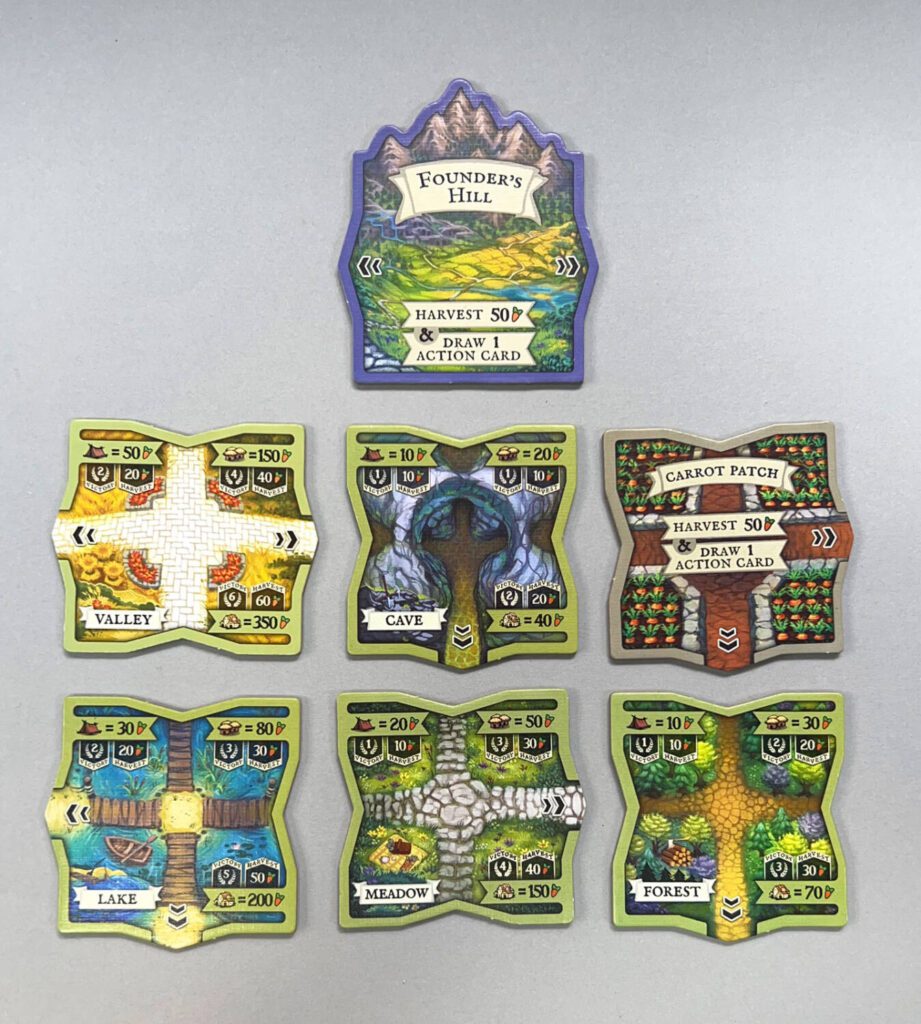
If you land on a garden plot tile and no one has built a Camp, you can pay the cost in Carrots to do so. If a Camp has already been built, you can pay to build a Village. (And if a Village has been built, you can pay to build a Town.) To build a Village or a Town, place your disc atop the disc(s) already present on the tile—even if it’s your own.
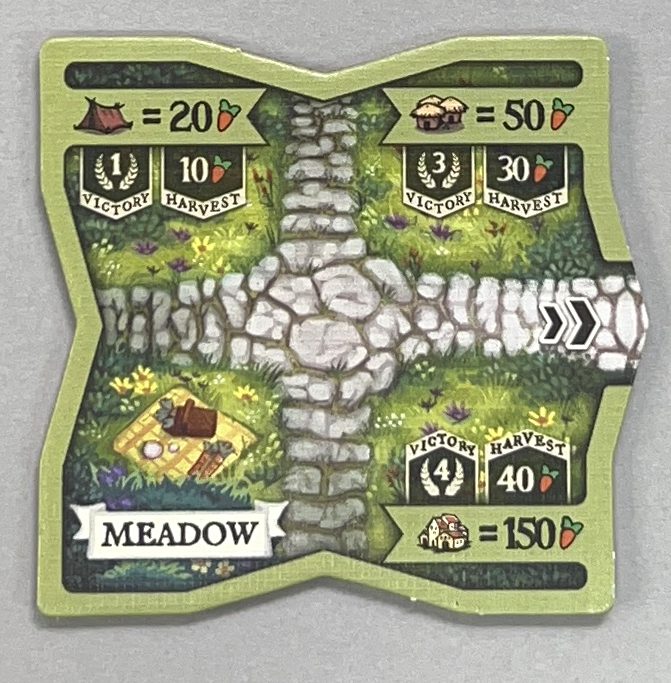
On the other hand, if anyone has already built a structure, you can decide to Harvest Carrots. To Harvest Carrots, you’ll look at the Harvest number next to the latest structure built. (e.g. The topmost disc on the tile.) If that building is yours, you’ll claim the Carrot for yourself. If someone else has built there, you both claim that many Carrots.
Orthogonally connected Gardens with the same Rabbit’s buildings will combine their Harvest numbers. And Harvesting Carrots more will mean you’re able to build more buildings on Garden tiles and score more points.
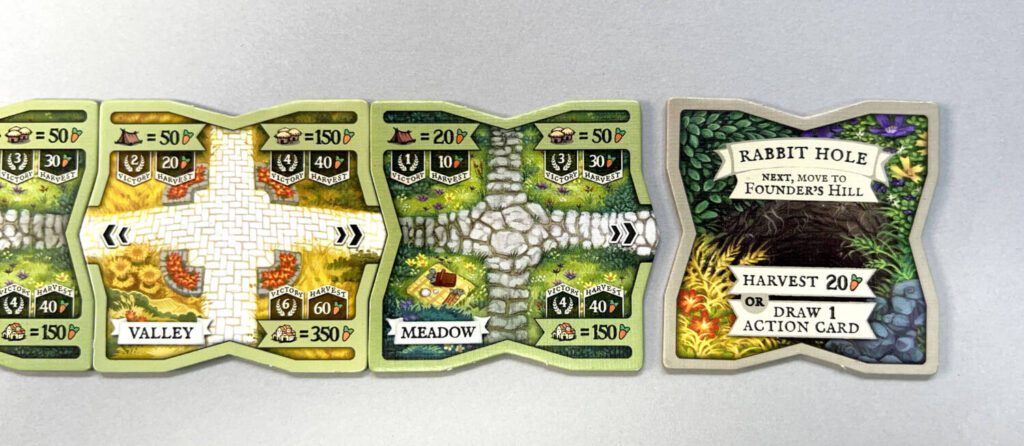
Sheba’s Scoring
The game ends after 20 rounds. At that time, you’ll move to the scoring phase.
Each building type scores points as shown on the specific tile. There is a rough correlation between the cost of putting up a building and the number of points awarded at the end of the game for each building. The more expensive the building, the more points you’ll earn.
While you can score as you play the game, I’ve found it’s less distracting to do all the scoring at the end of the game. I start by scoring all the Towns (3rd level discs), removing them from the tiles as they’re scored. Then I’ll score the Villages (2nd level), then Camps (1st level).
One extra point each goes to (a) the player who has the largest orthogonal series of connected gardens and (b) the player with the most Carrots.
Thumper’s Thought
With a standard game only taking 20 turns each (there’s a recommended Starting Game that only lasts 10 turns, but for a game this simple, 20 turns is just enough), and with turns going quickly, our games only took about 30-40 minutes to set up, play, and score. That felt right for a lightweight game like this.
There are a lot of things to like about Rabbit Island. The tiles are all thick cardboard and the artwork is bright and attractive. It’s an easy game to set up and teach. That each time you play your board/garden paths will be different is a sure bonus. Both counting turns and end game scoring are easy to do, thanks to the included boards. As a bonus, you can even put all the Movement cards in order to tell the rabbits’ pre-game story about leaving their old home and traveling to Rabbit Island.
I also have to give credit to the publisher, Infinite Heart Games, for running such a successful Kickstarter campaign. In 2017, they hit all of their stretch goals, but they also managed to get backers for some extras including a coloring book, and a storybook with recipes. That’s some serious community buy-in.
One word of warning: don’t be misled by the Explore, Build, Conquer subtitle. This really isn’t a 4x game. While you do all three, there is no Extermination or Combat here.
Between the friendly graphics and gameplay, Rabbit Island is an easy game to get to the table for newcomers and/or families. Providing the kiddos can add and subtract, they shouldn’t have any problem playing and being competitive. While the decision tree here isn’t as crunchy as, say, AquaSphere, there’s enough going on that even experienced gamers will have to take a moment to strategize their movement options with their Movement cards.
So, run rabbit run, and give this one a try.


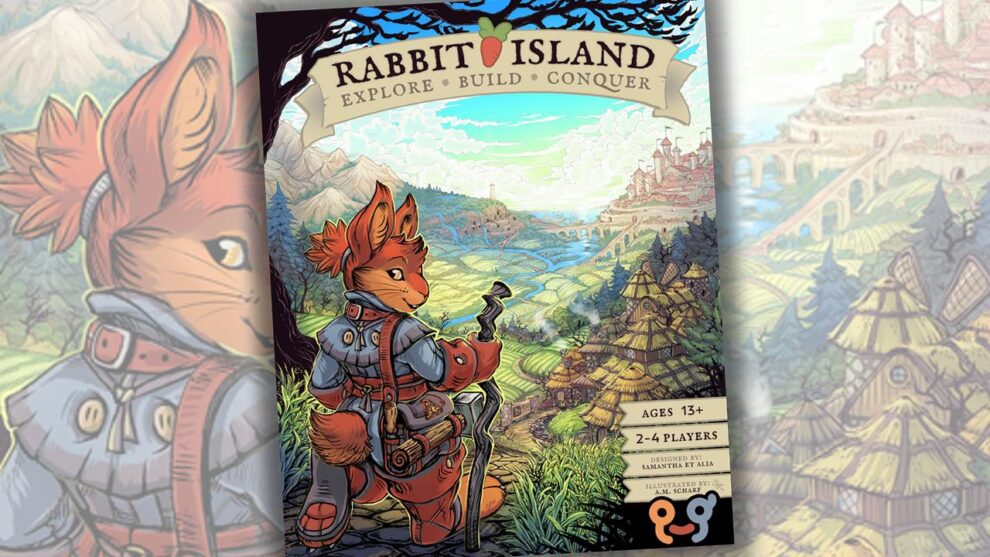

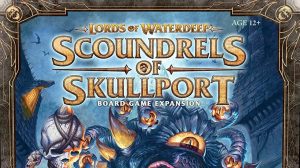

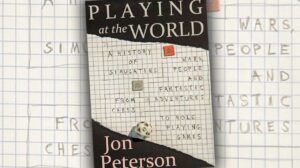




Add Comment